26+ Sample Medical Timeline
-
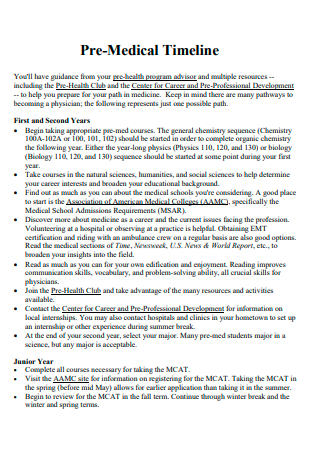
Pre-Medical Timeline
download now -
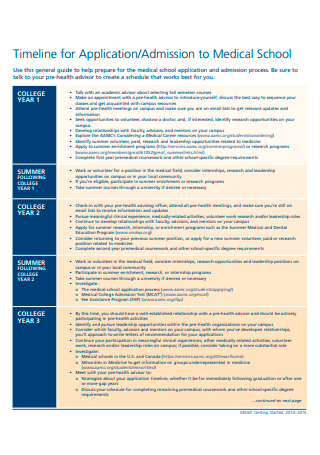
Admission to Medical School Timeline For Application
download now -
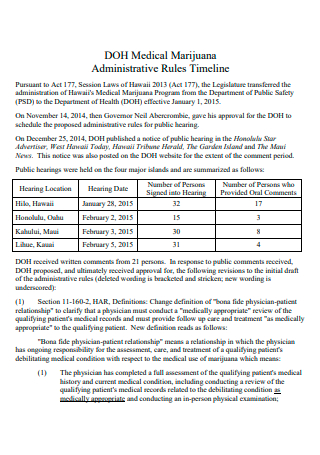
Medical Administrative Rules Timeline
download now -

Medical School Undergraduate Timeline
download now -
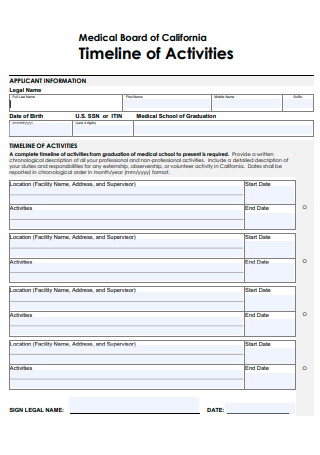
Medical Board Timeline of Activities
download now -
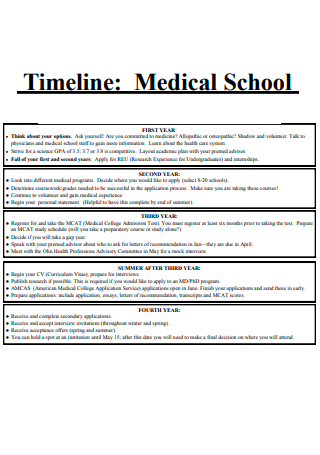
Medical School Timeline
download now -
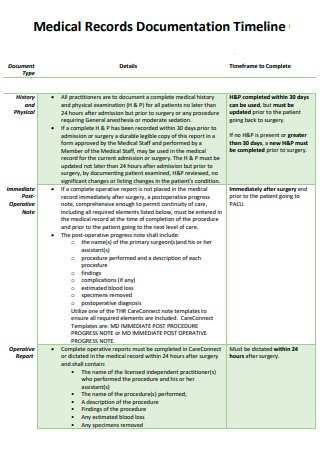
Medical Records Documentation Timeline
download now -
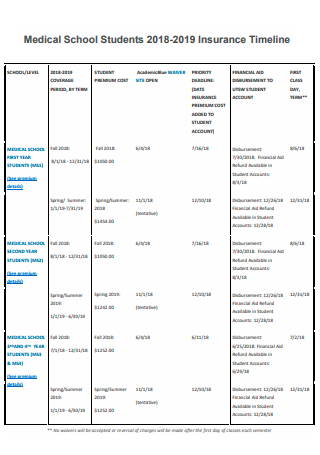
Medical School Students Insurance Timeline
download now -
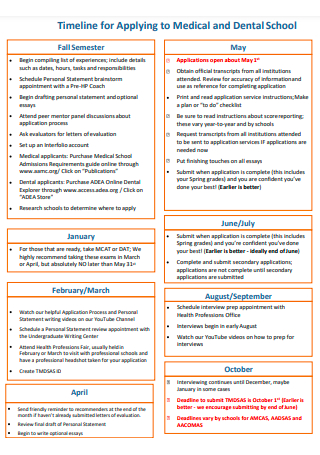
Medical and Dental School Timeline
download now -
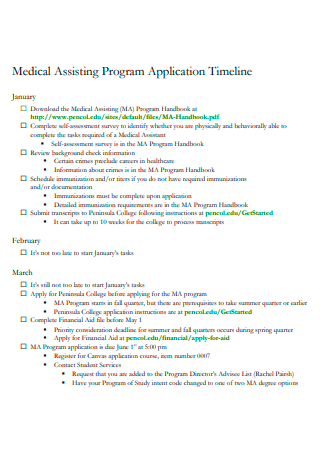
Medical Assisting Program Application Timeline
download now -
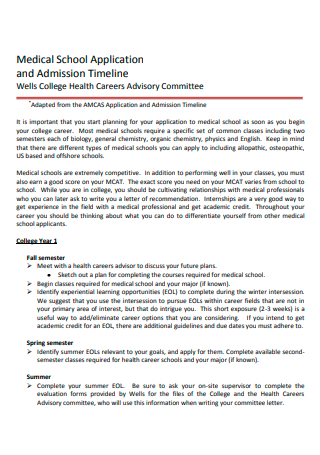
Medical School Application and Admission Timeline
download now -
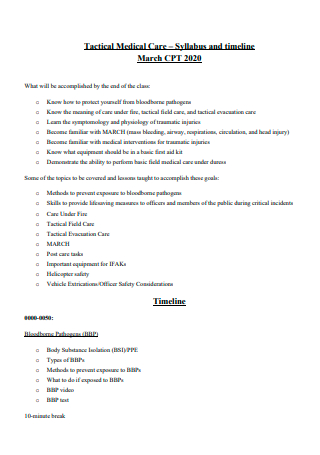
Tactical Medical Care Syllabus and Timeline
download now -

Medical Rule Making Timeline
download now -
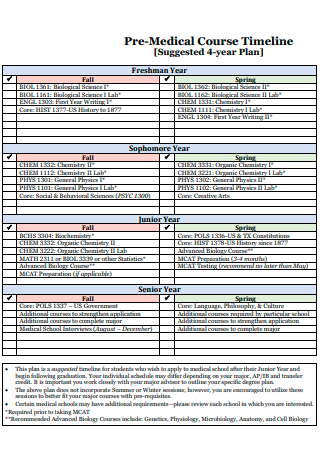
Pre-Medical Course Timeline
download now -
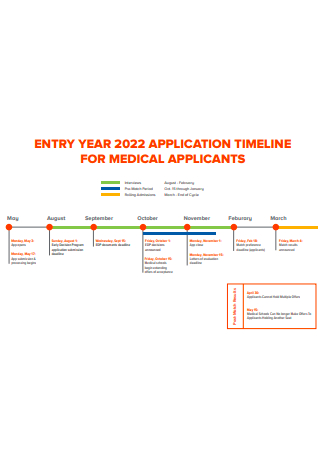
Medical Applicants Application Timeline
download now -
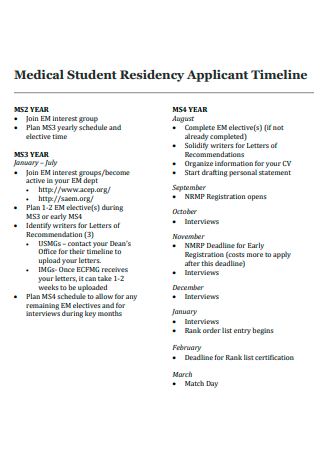
Medical Student Residency Applicant Timeline
download now -

Medical Care Providers Timeline Transition Checklist
download now -

Medical Center Leadership Salary Restriction Timeline
download now -
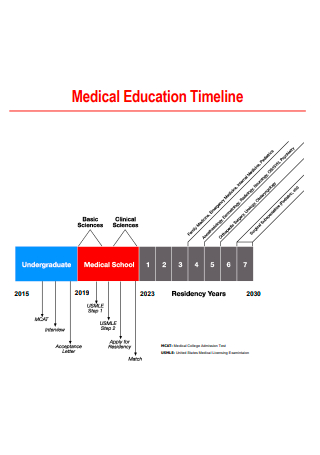
Medical Education Timeline
download now -

Family and Medical Leave Insurance Timeline
download now -
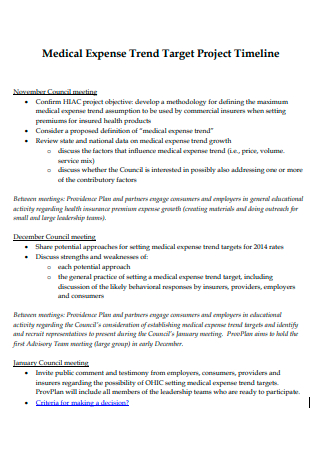
Medical Expense Trend Target Project Timeline
download now -
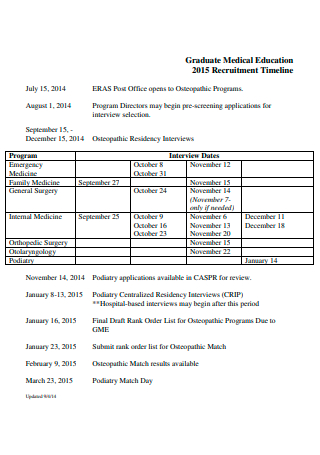
Graduate Medical Education Recruitment Timeline
download now -
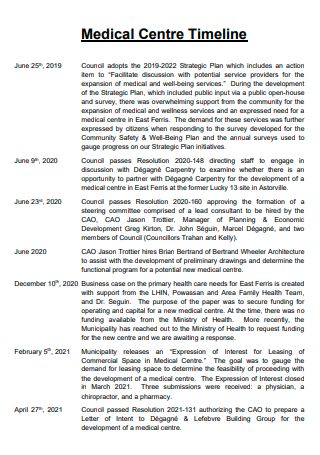
Medical Centre Timeline
download now -
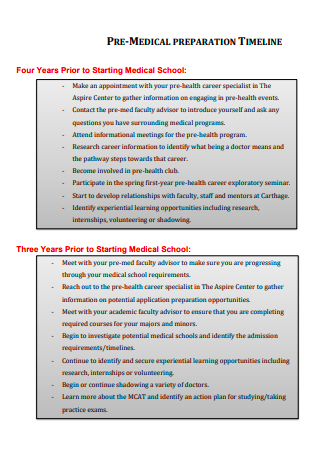
Pre-Medical Preparation Timeline
download now -
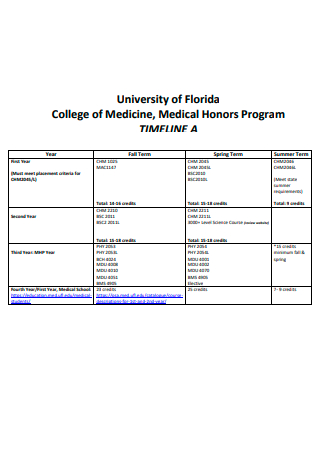
Medical Honors Program Timeline
download now -
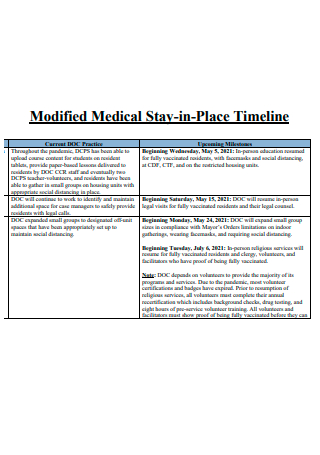
Modified Medical Stay in Place Timeline
download now -
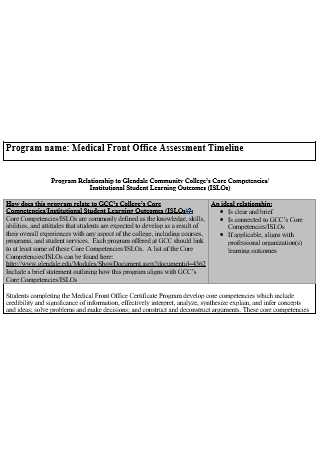
Medical Front Office Assessment Timeline
download now
FREE Medical Timeline s to Download
26+ Sample Medical Timeline
What Is a Medical Timeline?
Tips for Surviving Medical School
Qualities Needed In Medical Students and Practitioners
How to Create a Medical Timeline
FAQs
How long is the medical school timeline?
How long is med school after pre-med?
What is the order of medical school?
What Is a Medical Timeline?
A medical timeline is a detailed timeline that charts or plots the medical journey and next steps of an aspiring doctor or any specialized health professional.
According to a 2019 article published by the Association of American Medical Colleges or AAMC, women already make up the majority of medical students in the United States. Based on the data, women comprised 50.5% of all medical students in 2019; which increased from just 46.9% back in 2015.
Tips for Surviving Medical School
The journey to becoming a doctor is, by no means, easy or simple. Aside from the heavy academic requirements, it takes much time, investment, and effort to get through medical school. Despite the difficulties and challenges, there are simple yet powerful ways to safeguard one’s physical, mental and emotional health while attending med school.
Qualities Needed In Medical Students and Practitioners
Being in the healthcare or medical field is no walk in the park. Aside from years of training and study, the work itself is literally a matter of life and death. There are certain qualities or traits that anyone who wants to pursue a career in medicine and public ought to have. The following examples describe just some of these key qualities.
How to Create a Medical Timeline
To create a medical timeline, you need to do adequate research in order to properly chart your timeline. But if you are looking for ease and convenience, you can easily use any sample template from the collection above. Choose one that suits your needs and follow the instruction guide below.
Step 1: Plan and Prepare
A medical timeline requires a bit of research and planning. Although the content of your timeline will depend on your preferences and needs, you need to gather enough information or data in order to plot the timeline. For instance, you can inquire in your med school of choice or do your own research on the internet. What are the steps or levels that medical students need to go through? What are the specifics of each level or requirements to apply for a specialization in medicine? These are the types of questions you need to explore when conducting your planning and preparation. Once you have all the data you need, you can then proceed to designing your timeline.
Step 2: Establish a Format
A basic timeline is relatively simple to make. But for a medical timeline, you may want to modify it according to your needs. Before filling in your timeline, you must first design its structure and format. You can use a basic timeline or a Gantt chart, whatever meets your objective. By using a clear and appropriate format, you are establishing a logical flow that will enable you or the reader to better comprehend the medical timeline. If you need help with the format, you can refer to the sample medical timelines above. It will save you a lot of time and effort if you have a template as guidance or reference.
Step 3: Plot and Chart
Once you have established the format of your timeline, you can now begin to plot your timeline. A medical timeline is pretty universal. In a majority of cases, students take up a pre med course such as biology, health sciences, or psychology before proceeding to medicine. After entering and completing med school, a student can take a number of exams depending on their individual goals. Then if they pass their exams, most enter into residency for a couple of years. Finally, if a licensed physician or general practitioner decides to pursue a specialization, they need to undergo further training. This chronological medical timeline can be as general or specific as you need it to be. It just needs to be in proper order so it is easier to follow and understand.
Step 4: Other Important Details
The last step is optional, but if you want to include other relevant details in your timeline, you are free to do so. Again, as mentioned in the previous step, your medical timeline can be as specific as you want. You can incorporate related concepts or notes for each section of your timeline. These notes may be useful over the course of your study or serve as potent reminders. What matters is that you organize these details in a clear and orderly manner.
FAQs
How long is the medical school timeline?
A typical medical school timeline can range anywhere between 8-10 years. Those undergoing further training and studies in specialized medical fields can take more than 10 years to complete their training.
How long is med school after pre-med?
Medical school typically takes four years to complete. Although, it would depend on individual circumstances and preferences as well.
What is the order of medical school?
Generally, it starts with taking a pre med course, proceeding to medicine proper, undergoing residency training, and further studies or training for specializations.
The journey to becoming a licensed doctor is by no means easy. You need dedication, commitment and passion to be able to face the demands and struggles of being a health practitioner. Browse the sample templates above, select a template that meets your needs, and start crafting your own timeline today!
